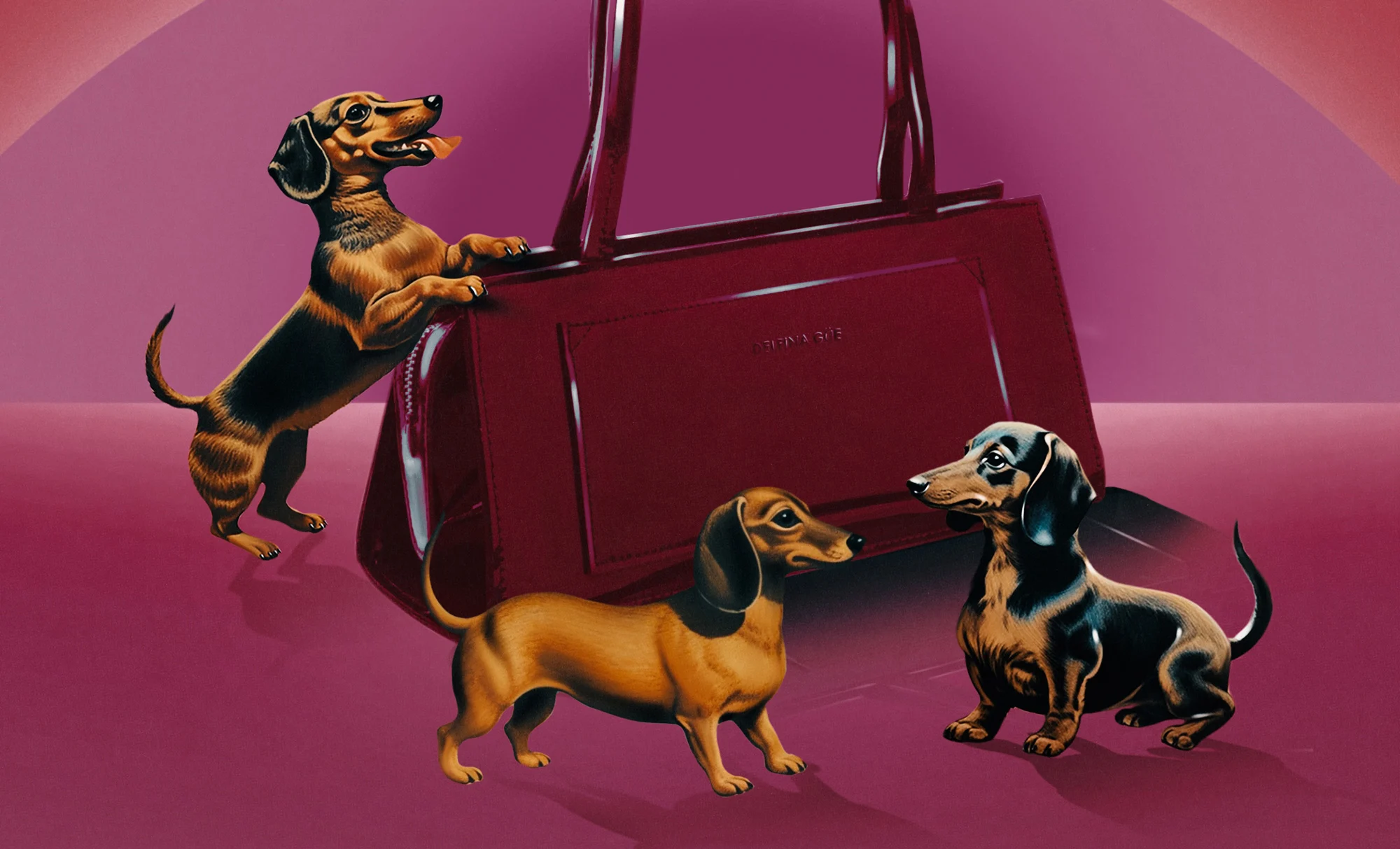
While she was born and bred—and is now based—in Buenos Aires, Lucila Taba makes work that feels relevant to all the 90s kids who grew up glued to American television, movies and music videos in living rooms whole oceans away from Hollywood. From gleaming cars in arcade colors and airbrushed, sparkling animals to flashy retro film titles, she tells Alix-Rose Cowie about the inspiration behind her nostalgic designs.
As a child in Argentina, graphic designer, art director and illustrator Lucila Taba idealized a world that was just out of reach. “Around 1997, going to Disneyland was every kid’s dream,” she says. “Our government was very influenced by TV glamor and the American lifestyle, but politically it was a period of economic crisis and social inequality.” Despite no longer engaging with American culture in the same way, her creations are packed with nostalgia from that era.


After high school, Taba completed a degree in graphic design at the University of Buenos Aires, and then worked at design studios before going solo in 2017. As a freelancer, she works on a variety of projects—album art, title design, typography—with a broad pool of references, but much of her style leans gloriously into a gleaming airbrushed aesthetic in arcade colors. You can spot the iridescence of Disney’s “Fantasia” and the holographic color-frenzy of her Lisa Frank sticker collection. Her illustration of a puppy on a tray of martinis as prime example, it’s fun to think of her images as an 80s or 90s child’s ultimate idea of luxury and sophistication; the shine of a cherry-red convertible or the fantasy of a banana split with whipped cream when your mom’s told you to go and eat an apple.
Gen X and millennials coming of age outside of America are often fluent in its pop culture alphabet all the same: U is for Uncle Jesse, S is for string cheese, A is for ‘As if!’. Working for a client in Los Angeles to create promotional posters for their weekly parties, Taba had fun playing with icons she could instantly recall, like an escalator from 100 teen movie scenes set in a mall. “It was funny because it was all clichés,” she says, “That universe tends to be generic so you have to be playful with it.”


Taba works most often with local brands in Argentina, and enjoys applying her airbrushed style to the familiar imagery and objects that surround her to make it her own. An example is her ongoing collaboration with fashion label Revolver, creating prints for T-shirts. Some of her designs include a trio of cats inspired by the strays of Buenos Aires, a dessert you’ll likely find in the city’s cafes and a cheese and wine spread with a brass crocodile nutcracker that most locals would recognize. An illustration of wild horses could easily be mistaken for a Western scene but it’s inspired by a Patagonian landscape. “My reference might be there [America],” she says. “But it feels good to value what’s here.”

The freedom to develop her own language first came from working closely with Argentinian indie bands and labels. “I’ve always been interested in the relationship between music and visuals, and how to create graphic universes around music,” she says. “Here in Argentina the music scene is huge, and there’s a lot of talent.” She met directors while working on music videos which led to opportunities working with production companies to create movie posters and collateral for Argentina’s vast and varied film industry. The graphics are determined by the mood, era and art direction of the movies Taba works on, but it seems she’s still finding plenty of room for a flashy, retro title or a hazy glow.


Taba relishes the challenge of recreating a vintage effect with today’s tools and tech. “While airbrush art is rooted entirely in analog techniques, my creative process is digital,” she says. She describes her process as chaotic in that she jumps between various software programs and plugins to get what she’s going for. It’s not unusual for her to spend ages trying to get a very specific kind of glow, blur or texture. “I always start with a collage,” she says. “I collect images or generate them using AI, deconstructing and drawing on them. When I come up with a composition that works, I redraw it digitally (generally using Procreate). After that, I bring in my own toolkit of textures, brushes or grains. This process is always a ping-pong between Illustrator and Photoshop.”

To find references for a certain decade, treatment or design movement, Taba digs deep into online databases where enthusiasts and nostalgia-nerds have lovingly scanned in old vinyl and CD covers, book jackets or magazine ads. Some of her favorite resources are Discogs, Flickr, the Internet Archive or Youtube to rewatch the opening titles of movies. Being able to browse these virtual archives by genre reminds her of a pastime that doesn’t exist anymore. She likens it to spending an afternoon in an old Tower Records store, or visiting a Blockbuster Video to rent a movie (probably for the second or third time).